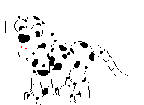
Nature's way
is the only way!
How We Made The Switch For Cats

Nature's way
is the only way!
The First Meal ~~~
If regular feed is dry, start gradually switching your cat to canned food. Take about a month to do this before mixing in the meat. This helps the cat adjust to a wet food. Cats react to changes in the smell of their food and changes in texture.
| Homepage |
| Beef Diet |
| Lamb Diet |
| Treats |
| About Us |
| Morah's Story |
| Dog Pictures | Cat Pictures | Luna Noua Flock |
| Others' Experiences |
| Is Raw Better? |
| Feeding Your Dog |
| Suggested Reading |
| Feeding Your Cats |
| Distributors |
| See What Others Have To Say |
| Meet Pete |
| Zeus |

© Copyright mORIGINS, 2005 All Rights Reserved.
This content may be copied in full, as long as copyright, contact, and
creation information is given, only if used WITH OUR PRIOR APPROVAL. |